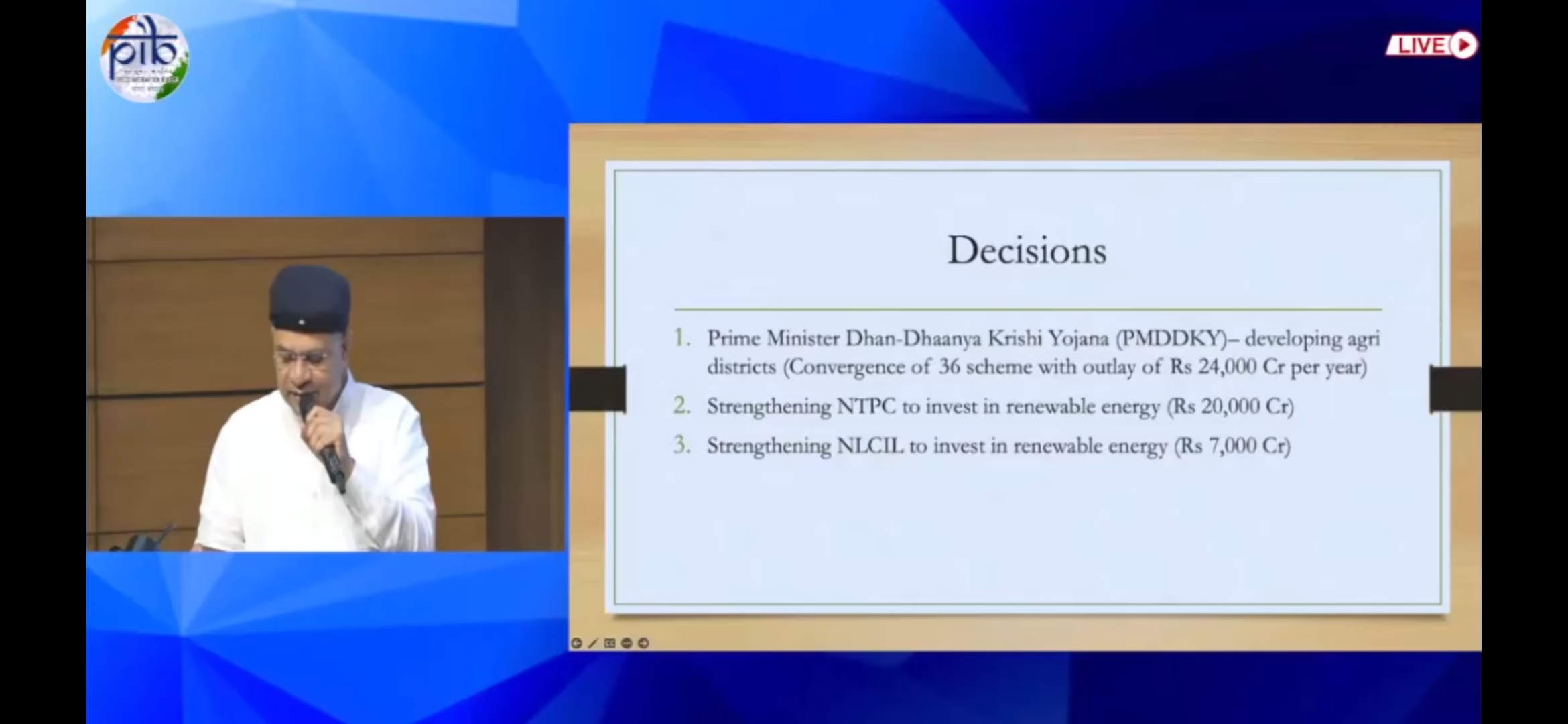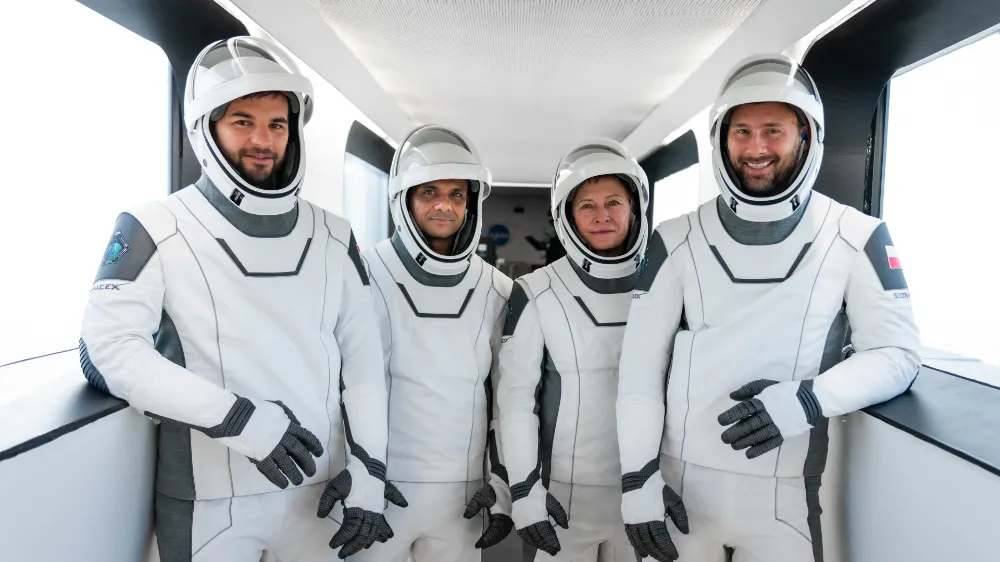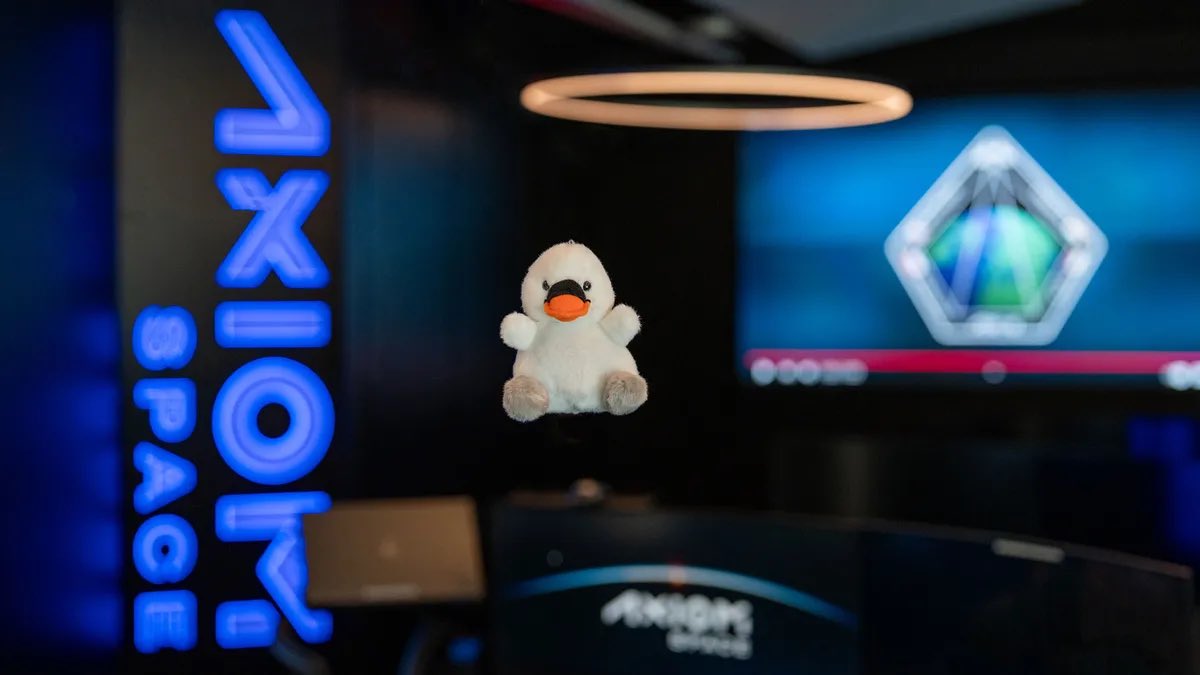GC Shubhanshu Shukla returns from ISS after 18 days aboard. Indian Union Cabinet hails it as a historic moment for India’s space program. Let’s know more about GC Shubhanshu Shukla Returns from ISS and whole journey.

GC Shubhanshu Shukla Returns from ISS: A Historic Day for India’s Space Journey
In a moment of national celebration and pride, Group Captain Shubhanshu Shukla has returned safely to Earth after completing a historic 18-day mission aboard the International Space Station (ISS). This milestone marks the first-ever stay of an Indian astronaut aboard the ISS, making it a landmark achievement in the country’s journey into space.
The significance of this moment was officially recognized by the Union Cabinet, which passed a resolution congratulating Shukla on his successful return. The statement, released by Union Minister Ashwini Vaishnaw, described the moment as one of “immense pride, glory, and joy” for the entire nation.
An Indian Astronaut’s Historic Journey to the ISS
Group Captain Shubhanshu Shukla’s spaceflight mission represents a new era for India’s space program. Launched as part of an international partnership and coordinated through both ISRO and global space agencies, this mission was not only symbolic but also deeply scientific. Shukla spent 18 days on the ISS, participating in experiments focused on microgravity, space farming, physiological changes in humans, and advanced materials research.
His return signals the first time an Indian astronaut has lived and worked on the International Space Station, which has served as a space laboratory since 2000. Prior to this, only a select few Indians had flown to space—most notably Rakesh Sharma in 1984, who flew aboard a Soviet Soyuz spacecraft. Shukla’s journey is the first to involve a stay on the ISS, putting India in an elite group of nations that have contributed human capital to the orbital station.
Union Cabinet Resolution: National Recognition for a National Hero: GC Shubhanshu Shukla Returns from ISS
On July 15, 2025, following Shukla’s safe splashdown and recovery, the Union Cabinet held a special session where it passed a resolution recognizing his contribution. Union Minister Ashwini Vaishnaw announced the resolution, calling Shukla’s return a moment of great triumph.
“This is an occasion of immense pride, glory, and joy for the entire nation. The Union Cabinet, along with the nation, congratulates Group Captain Shubhanshu Shukla on his successful return to Earth,” he stated.
The Cabinet praised not only the astronaut but also ISRO scientists, engineers, support staff, and international partners who made the mission possible. The statement reflected a deep sense of gratitude for the dedication and collaborative spirit behind this achievement.
Mission Overview: Science, Sovereignty, and Symbolism: GC Shubhanshu Shukla Returns from ISS
The mission carried both symbolic and strategic importance for India. It showed that Indian astronauts are capable of participating in international missions involving advanced orbital infrastructure like the ISS. It also positioned India as a reliable human spaceflight partner, just ahead of the much-anticipated Gaganyaan mission, which will be India’s first indigenous crewed mission.
During his stay, Group Captain Shubhanshu Shukla conducted multiple scientific experiments relevant to India’s future space ambitions. Some of the areas of focus included:
- Microgravity impact on Indian crop growth
- Human health parameters in spaceflight
- Development of ISRO’s in-house space biology payloads
- Material behavior in long-duration space exposure
These experiments are expected to help Indian scientists prepare for longer missions, potentially to the Moon or even Mars in the future.
A Nation’s Inspiration: GC Shubhanshu Shukla Returns from ISS
Born and raised in India, Shubhanshu Shukla has had a distinguished career in the Indian Air Force, serving as a test pilot and later as a mission specialist. His selection for the ISS mission was part of India’s growing collaboration with global space agencies.
Shukla underwent rigorous training in Russia, Europe, and the United States before being cleared for the mission. His physical endurance, scientific acumen, and representation of India on an international stage have made him a household name. Schoolchildren, students, and citizens across India followed the mission closely, many inspired to dream bigger and aim for the stars.
ISRO’s Growing Legacy and Global Role
The Union Cabinet’s resolution did not miss the opportunity to highlight the role of the Indian Space Research Organisation (ISRO). In his address, Minister Ashwini Vaishnaw extended congratulations to the entire ISRO team for this “historic success.”
The mission has further enhanced India’s global reputation in the space community. It follows several recent milestones:
- The success of Chandrayaan-3, India’s Moon mission
- Launch of Aditya-L1, India’s solar observation mission
- Announcement of Gaganyaan, India’s first indigenous human spaceflight program
- India becoming a signatory of the Artemis Accords
This consistent string of successes highlights that India is not just participating in global space exploration—it is increasingly shaping it.
What This Means for the Future of Indian Space Missions: GC Shubhanshu Shukla Returns from ISS
Shubhanshu Shukla’s successful return from the ISS is not just a single milestone. It lays the groundwork for:
- India’s full participation in global space station efforts post-ISS
- Enhanced international crew collaboration for long-duration missions
- More training programs for Indian astronauts
- Potential joint missions to the Moon or Mars
Furthermore, the technologies developed and lessons learned will directly benefit ISRO’s future manned missions, especially the Gaganyaan program scheduled to take place within the next two years.
Public Reactions and National Celebrations: GC Shubhanshu Shukla Returns from ISS
Across the nation, Shukla’s return was met with spontaneous celebrations. From schools to science institutions, people watched live coverage of the re-entry and splashdown. Social media was flooded with messages of congratulations, many calling Shukla the “new symbol of India’s space dreams.”
Science clubs, educational institutions, and aerospace startups have already announced events to honor his contribution and create awareness about India’s expanding role in human spaceflight.
Conclusion: A New Chapter for India in Space
Group Captain Shubhanshu Shukla’s mission aboard the International Space Station is a defining moment in India’s space history. It reflects India’s growing capabilities, international trust in its astronauts, and the nation’s determination to play a pivotal role in space exploration.
As India prepares to launch its own astronauts into space through the Gaganyaan mission, the successful completion of this international mission sends a clear message: India is ready.
With support from the government, expertise from ISRO, and public enthusiasm, India’s dream of being a leader in space exploration is now within reach. And this mission, celebrated by the Union Cabinet and the people alike, marks a glowing beginning to that future.
https://x.com/PIB_India/status/1945423201837908114?t=-BEDTVDd-3YPsyQvv7yTmA&s=19
FAQs: GC Shubhanshu Shukla Returns from ISS
1. Who is Group Captain Shubhanshu Shukla?
Group Captain Shubhanshu Shukla is an Indian Air Force officer and astronaut who recently completed an 18-day mission aboard the International Space Station (ISS), becoming the first Indian to visit the ISS.
2. What was the duration of Shubhanshu Shukla’s space mission?
Shubhanshu Shukla spent 18 days aboard the ISS during his historic mission.
3. What did the Union Cabinet say about Shubhanshu Shukla’s return?
The Union Cabinet passed a resolution congratulating Group Captain Shubhanshu Shukla, calling it an occasion of pride and glory for India’s space journey.
4. Why is this mission considered historic?
This marks the first time an Indian astronaut has visited the ISS, representing a major milestone for India’s space exploration capabilities.
5. What impact will this mission have on India’s space program?
It opens a new chapter for India’s space ambitions, boosting international collaborations, astronaut training, and future space missions including Gaganyaan.
6. Which organizations were involved in this mission?
The mission was a joint effort involving @ISRO, international space agencies, and the Indian Air Force.
7. How did Shubhanshu Shukla return to Earth?
He returned aboard a spacecraft capsule that safely splashed down in the ocean after detaching from the ISS, completing reentry procedures successfully.
8. What role did ISRO play in this mission?
ISRO provided support in mission planning, astronaut training, and coordination with international space agencies to ensure a successful flight and return.
9. What message did the Union Minister Ashwini Vaishnaw share?
Union Minister Ashwini Vaishnaw praised Shukla’s achievement and congratulated the entire ISRO team for their contribution to this historic success.
10. What’s next for India’s human spaceflight program?
Following this milestone, India is expected to accelerate its Gaganyaan mission and deepen collaborations with global space agencies for long-term space exploration.
Axiom Mission 4 Prepares for Undocking—What Happens When They Return to Earth?


